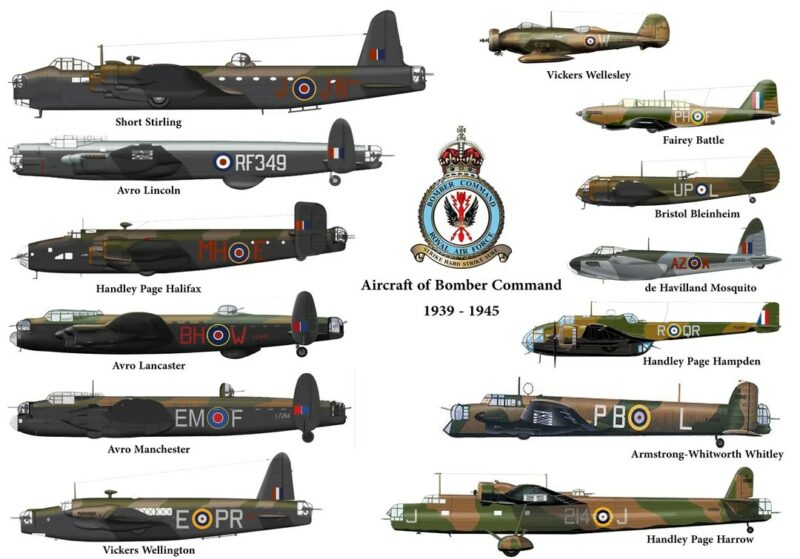Research
Research
Research
The Aircraft of RAF Bomber Command

Stirling
The Aircraft of RAF Bomber Command in WWII
When we think of the aircraft flown by crews of Bomber Command, thoughts typically turn to the ‘heavies’ – the Lancaster, Stirling and Halifax – and the nimble, multi-purpose Mosquito and perhaps the iconic Wellington. However, several other aircraft were used by Bomber Command through the course of WWII.
The development from the bombers in service in 1939 to the advent of the Lancaster is a storied one. The book New Zealanders with the Royal Air Force (vol. I) notes that as war broke out in September 1939, Bomber Command possessed some thirty-five squadrons but many of them were not yet fully trained for operations.
Ten of these squadrons were equipped with already obsolescent Fairey Battle and a further ten with Bristol Blenheim aircrafts. Only five had Vickers Wellingtons, and the rest of the force was made up of the Armstrong Whitworth Whitley and Handley Page Hampden squadrons in approximately equal numbers. These had been designed as tactical-support medium bombers and lacked enough range or ordnance capacity for anything more than a limited strategic offensive.
None of the characteristic four-engined bombers which were to play so great a part in the strategic air offensive were yet available. Production of the Short Stirling and Handley Page Halifax did not begin in earnest until the early months of 1939. The Avro Lancaster was, at the time not even on the drawing board, Avro at the time focused on the twin-engined Manchester.
In addition to British designed and built aircraft (illustrated below), several American types were flown, including the Boeing B-17 Flying Fortress, the Consolidated B-24 Liberator, Douglas A-20 Boston, Lockheed Ventura and North American B-25 Mitchell.
We will be uploading a series of articles looking at each in turn, and including reference to some of the New Zealanders who undertook mission on these aircraft. Collectively they provided the power of Bomber Command.
British built bombers 1939-45

Of the aircraft shown above the Handley Page Harrow was withdrawn as a frontline bomber by end 1939, having never flown any active combat missions, and was instead used as a transport aircraft, in training and in Operation Market Garden.
The Vickers Wellesley had also been withdrawn from home squadrons, but was used by the RAF in the Middle East
The Avro Lincoln attained operational status in August 1945 (after VE-Day). It was initially assigned to units of the Tiger Force, the Commonwealth heavy bomber force (including 75 (NZ) Sq.), intended to play a role in the Japan campaign in the closing stages of WWII, but the war ended before the Lincoln could undertake operations.
October 14, 2025